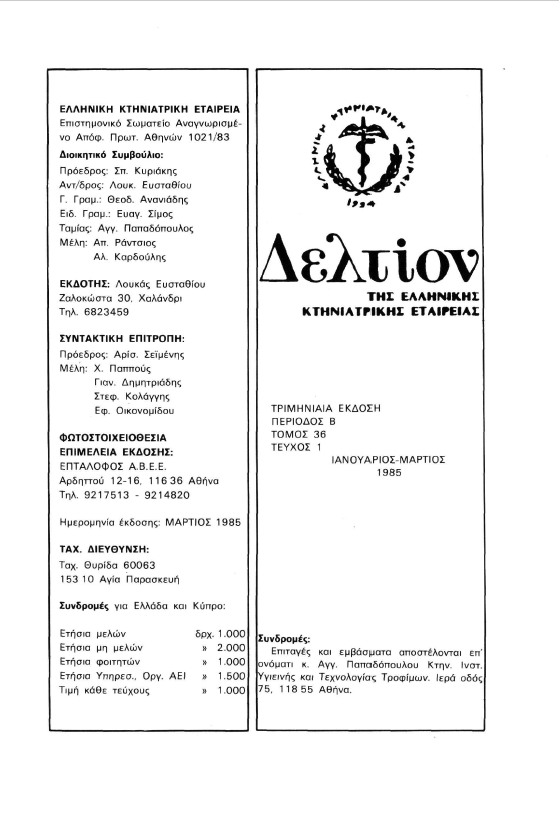Characteristics of quails egg's quality
Abstract
The eggs used in this study were laid by Coturnix coturnix japonica quails, during their 7th to 22th weeks of laying production. A total of 280 eggs collected twice daily in last three days of 7th, 8th, 10th, 11th, 12th, 14th, 17th and 22th weeks were used to investigate egg quality and egg shell strength under typical greek farming conditions. The results drawn from this study were as follows: 1. The egg weight increased significantly (P<0.001) from 11.33 g on the 7th week to 12.95 g on the 22th, while the shell weight increased (P<0.05) only by 0.07 g. 2. The yolk weight increaced by 0.51 g (Ρ 0.001), while the albumen weight increased (P<0.05) by 0.28 g. 3. The participation of yolk weight, albumen weight, and the shell weight to the total egg weight was 32.59%, 53.57%, and 7.80%, respectively. 4. Significant (P<0.01) regressions between the egg's characteristics and the quail's age were obtained with R' values ranging from 0.18 to 0.75. In addition significant correlation (Ρ 0.001) of egg's shape with albumen weight, and specific gravity were found with r=0.8160 and r=7878, respectively. The conclusions were that the egg's shell strength and the egg's characteristics were modified as the quails aged. Also the best criterion for the shell's strength was the egg shape index.
Article Details
- How to Cite
-
ΓΙΑΝΝΑΚΟΠΟΥΛΟΣ Α. Λ., & ΤΣΕΡΒΕΝΗ-ΓΟΥΣΗ Α. Σ. (2019). Characteristics of quails egg’s quality. Journal of the Hellenic Veterinary Medical Society, 36(1), 18–27. https://doi.org/10.12681/jhvms.21672
- Issue
- Vol. 36 No. 1 (1985)
- Section
- Articles

This work is licensed under a Creative Commons Attribution-NonCommercial 4.0 International License.
Authors who publish with this journal agree to the following terms:
· Authors retain copyright and grant the journal right of first publication with the work simultaneously licensed under a Creative Commons Attribution Non-Commercial License that allows others to share the work with an acknowledgement of the work's authorship and initial publication in this journal.
· Authors are able to enter into separate, additional contractual arrangements for the non-exclusive distribution of the journal's published version of the work (e.g. post it to an institutional repository or publish it in a book), with an acknowledgement of its initial publication in this journal.
· Authors are permitted and encouraged to post their work online (preferably in institutional repositories or on their website) prior to and during the submission process, as it can lead to productive exchanges, as well as earlier and greater citation of published work.



